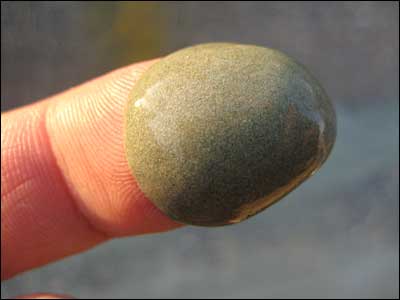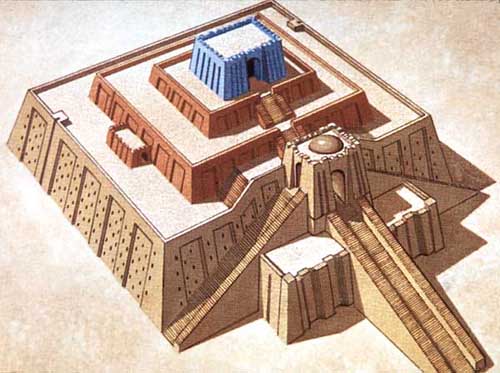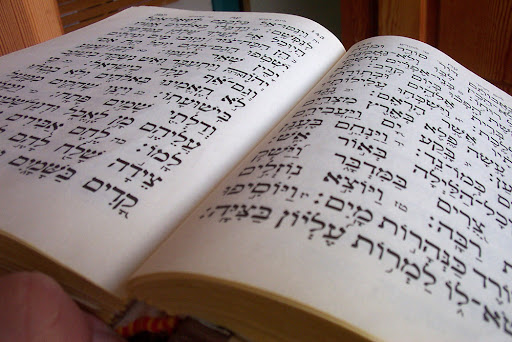Difference between revisions of "*History 8 Mesopotamia Vocabulary"
| Line 228: | Line 228: | ||
22. Id Nebuchandnezzar and Zedekiah | 22. Id Nebuchandnezzar and Zedekiah | ||
| − | + | Nebuchandnezzar the second was born in 605 B.C. and died in 562 B.C. He succeeded his father Nabopolssar and began to conquer kingdoms and states for the growth of the Babylonian Empire. He conquered the Phoenicians,the northern kingdom(by Assyria), and the state of Judah in 586 B.C. To fully conquer Judah, Nebuchandnezzar forced approximately 10,000 upper class Jewish citizens to be deported, beginning the Jewish exile.He rebuilt the city of Babylon and Babylon became one of the most prominent cities in the Middle East. | |
| − | + | Zedekiah was the king of Judah from 597-586 B.C.when Judah was destroyed by Nebuchandnezzar and the Babylonians. In his ninth year of rule, Zedekiah planned to lead a revolt against the growing Babylonian empire with the help of the Egyptians, but his city was under siege before he could raise an army. When the Babylonians broke the city walls six months into the siege, Zedekiah and his sons fled to the Jordan river, but they were capture. Zedekiah's sons were slain before him and the Babylonians took Zedekiah back to Babylon where he was imprisoned until death. | |
| − | + | [[Image:http://www.build-a-beard.com/bab/tag/nebuchadnezzar]] | |
Sources: Manual | Sources: Manual | ||
| − | + | http://www.build-a-beard.com/bab/tag/nebuchadnezzar (for image) | |
| − | + | http://www.britannica.com/EBchecked/topic/656213/Zedekiah | |
| + | |||
23. ID Cyrus the Great | 23. ID Cyrus the Great | ||
Revision as of 14:29, 28 November 2012
Return to Main Page History 8
Work must be supported with citation of source. Manual may be noted with CF Manual and page number(s). Any information from class notes may be cited as Class notes (date of lecture). Name of Video. You may not use Wikipedia as a source. Please sign your entry.
1. individualism -a social theory advocating the liberty, rights or independent actions of the person. It is also the pursuit for yourself rather then the collective interest.
Works cited-
http://dictionary.reference.com/browse/individualism History Manual chapter 4: Mesopotamia page 80
-Peter Stone
2. idiosyncrasy - a characteristic or habit that is only common to one individual.
Works cited-
http://dictionary.reference.com/browse/idiosyncrasy
-Peter Stone
3. tenets
What is a tenet? A tenet is, as described by the Miram-Webster Dictionary, a "principle, belief, or doctrine generally held to be true." What tenets define western civilization? Possessive individualism, scientific utility, and free market philosophy have all been determined to have originated around this time. This basically means that the people of Mesopotamia were thinking about these things when they created their civilization, and answers the question of why we think the way we do. Therefore, our modern ideas of liberty and politics are derived from these basic ideas. Other things have also derived from the basic tenets of this society such as our belief system. A belief system is what lets us understand our own reality. For instance, our belief system would tell us that a furry animal with four legs and a tail is a dog. If you had more experience in life, you would know that the figure could be another animal. The reason society has advanced to the way it is to day is because the tenets of our ancestor's opinions were filtered through time until reaching our own minds.
Works Cited
Source of Definition of tenet:
Mirriam Webster. "Tenet Definition." Merriam-Webster. Merriam-Webster, n.d. Web. 06 Nov. 2012. <http://www.merriam-webster.com/dictionary/tenets>. Source of other information: History Manual chapter 4: Mesopotamia page 80 (read on 11/6/12)
Max Westmark
4. Mesopotamia
Known as the "cradle of civilization," Mesopotamia was located in between the rivers Euphrates and Tigres. By 5800 B.C. Mesopotamia was inhabited by many groups. Its name is from the Greek root meaning "the land between the rivers." Mesopotamia is known for the origins of agriculture (the production of crops and animals), written language, and cities. [1] Mesopotamia is classified in two parts. Northern Mesopotamia is mostly hills and plains, and it is great for planting, for the land is fertile from seasonal rains. On the other hand, Southern Mesopotamia has empty plains and marshes. This type of land required irrigation for the settlers to survive. Mesopotamia was an important part of the first settlements. [2]
Bibliography:
http://mesopotamia.lib.uchicago.edu/mesopotamialife/article.php?theme=First%20Farmers
Manual Page 81
http://www.artlex.com/ArtLex/m/mesopotamian.html
5. Alluvial
Alluvial is loose gravel, sand, silt, or clay deposited by currents or past streams. Alluvial often contains a good deal of organic matter. It therefore yields very fertile soils such as those of the deltas of the Mississippi, the Nile, the Ganges and Brahmaputra, and the Huang rivers. In some regions alluvial deposits contain gold, platinum, or gemstones and the greater part of the world’s supply of tin ore.

Bibliography
http://earthquake.usgs.gov/learn/glossary/?term=alluvium
http://www.britannica.com/EBchecked/topic/16665/alluvium
- Max Blekhman
6. Silt
Silt is a solid, dust-like sediment that water, ice, and wind transport and deposit. Silt is made up of rock and mineral particles that are larger than clay but smaller than sand. Individual silt particles are so small that they are difficult to see. To be classified as silt, a particle must be less than .005 centimeters (.002 inches) across. Silt is found in soil, along with other types of sediment such as clay, sand, and gravel.

Bibliography
http://education.nationalgeographic.com/education/encyclopedia/silt/?ar_a=1
- Max Blekhman
7. irrigation See History 8 Neolithic Concepts question 8
8. continuity
Continuity is an uninterrupted connection. One might describe it as unending persistence. One place that this can be seen is in the Iraqis persistence in their place of living. Year after year they rebuild their homes and building in exactly the same place. Their Cities now rest on a mountain of Deloris one hundred feet high.
http://www.merriam-webster.com/dictionary/continuity Iraq: The Cradle of Civilization Video
~Frances
9. mosque
A mosque is a Muslim place of worship, and plays a large role in the rise of civilization. Single family's can be traced back to running the main temples for centuries. Throughout the rise and fall of this civilization the religion may change but religious sits like this always stay the same.
http://www.merriam-webster.com/dictionary/mosque Iraq: The Cradle of Civilization Video
~Frances
10. Mudhif
A mudhif is a reed house, sometimes used as a guest house. Mudhifs have been built the same way for 5,000 years.

Sources: Class Notes from 11/8/2012, Manual p. 83, and [2]
-Courtney Jacobs
11. Apsu
Apsu is a "sea of fresh water" (really a lake) that abuts on the city of Eridu and the grasslands of Edin. The word "abyss" comes from the word Apsu. Apsu was the "dwelling-place" of Enki, the god of water and wisdom. Apsu is named after the god of freshwater, who was the father of Enki. It is said that Enki murdered Apsu and created the world out of his carcass.

Sources: Class Notes from 11/8/2012, Manual p. 83, [3], and [4]
-Courtney Jacobs
12. Edin Edin is the Sumerian word for the wild grasslands in which they presided. This word is the root word for the biblical "Garden of Eden". It was located in between the Tigris and Euphrates rivers. Edin was one f the areas the Sumerians presided. Sources: "Iraq: The Cradle of Civilization" video ~Keshav Krishnan
13.Homo Oeconomicus
Homo Oeconomicus is the economic man. He was born in Mesopotamia and most likely found in the world of Uruk, because that was where writing was first found in the world. 95% of the writing found is economic texts. This is what sprung his birth. His relations are held together by secular law, the root idea in the modern west.

Source: Manual pg. 84 Image from http://subrealism.blogspot.com/2009/11/homo-economicus.html Victoria Lima
14. semitic
Semitic describes cultures, people (Semites), and languages related to the Hebrew, Aramaic, Arabic, and Amharic groups from the Mesopotamian region. These languages are recorded as of four thousand years ago and have had a great impact on the cultural and linguistic landscape of the Middle East for thousands of years.[4]
One common example of a Semitic language is Hebrew, as scribed in the above image.
-Christian Maines
15. cunneiform
Cuneiform was an ancient Mesopotamian writing system based on wedge shapes. This was the most widespread writing system in the ancient Middle East and was common in script for over three millennia. Cuneiform originated with the Sumerians about 4 thousand RBItalic text years BCE. The earliest tablets of cuneiform script were from Uruk. Some of the scripts are thought to be ancient ledgers and records.[6]
The above image is of a cuneiform script.
-Christian Maines
16. ziggurat
A ziggurat is a huge temple built on a stepped platform. It is multi storied. Ziggurats were first constructed in Sumerian cities and later on Babylonian and Assyrian cities. An example of a ziggurat is Etemenanki, located in Babylon and 92 meter high. (Needs more detail about use and role in community RB)
 Picture:
Picture:
http://www.crystalinks.com/ziggurat.html Bibliography:
http://www.mesopotamia.co.uk/ziggurats/home_set.html
http://www.livius.org/za-zn/ziggurat/ziggurat.html
17. ID Sargon'
Sargon of Akkad was a Mesopotamian Ruler who reigned from 2334 BC to 2279 BC. He was one of the earliest empire builders, due to the fact that he conquered Southern Mesopotamia, parts of Syria, Anatolia, and Western Iran (known as Elam). Sargon also established the first Semitic dynasty and founded the Mesopotamia military tradition. He is known through the legends and tales passed down through 2,000 years of cuneiform, and not from written documents.
One folktale states that Sargon was a man of humble origins. A gardener found him as a baby floating in a basket in the river and raised the baby as his own child. Sargon's true father is unknown. His true name is also unknown and his mother is rumored to have been a priestess in a town near the middle Euphrates. Sargon, without any influential relations, acquired the post of cup bearer to the ruler of the city of Kish.
Sargon of Akkad's military prowess, ability to organize, and the legacy of the areas he conquered, caused commercial connections with many places such as the Indus Valley, and the Taurus Mountains to flourish. [9]
Annie Ren
18. internecine
Internecine, as defined by Merriam Webster Dictionary, means "marked by slaughter : deadly; especially : mutually destructive". (involving conflict within group: relating to or involving conflict within a group or organization. better definition rbItalic text) The theme of the first age of cities is internecine warfare. All the cities depended on the Euphrates River for irrigation, and it would be better for the city states to dwell together peacefully. But that did not happen. [10] Merriam Webster: http://www.merriam-webster.com/dictionary/internecine Manual pg. 85
Christina Ru
19. salinization
To salinize means "to treat or impregnate with salt" (Merriam Webster). The climate of Mesopotamia started to go through a drought. Much of the farmland had dried up and economic records show that people switched from farming wheat to farming more salt-resistant barley to overcome salinization. A lot of the land became wasteland and abandoned. The people became hungry and the price for grain increased sixtyfold. Government communication and international trade diminished. The worst arrived. It was and always will be a problem for those living in that area to hold the "rich and populous plain, with no natural boundaries, against the many enemies covetous of its wealth". (86) [11] Manual pg. 86 Merriam Webster: http://www.merriam-webster.com/dictionary/salinization?show=0&t=1353032244
Christina Ru
20. exigencies
Merian Webster Online Dictionary states that an exigency is something"that...is required in a particular situation." Every thing of life has three main exigencies: water, shelter, and light. Those are very broad exigencies. Each civilization had a specific few particular to their culture and location alone. The Mesopotamian cities who were not based on a river had the most desperate exigency for irrigation. A pure farming city had the exigency of livestock or meat in general. Exigencies are what someone or something needs in a particular situation and everyone needs something, even the ancient Mesopotamians.
Merian Webster Online: http://www.merriam-webster.com/dictionary/exigency
-Hayden Simmons
21. Exile
22. Id Nebuchandnezzar and Zedekiah
Nebuchandnezzar the second was born in 605 B.C. and died in 562 B.C. He succeeded his father Nabopolssar and began to conquer kingdoms and states for the growth of the Babylonian Empire. He conquered the Phoenicians,the northern kingdom(by Assyria), and the state of Judah in 586 B.C. To fully conquer Judah, Nebuchandnezzar forced approximately 10,000 upper class Jewish citizens to be deported, beginning the Jewish exile.He rebuilt the city of Babylon and Babylon became one of the most prominent cities in the Middle East.
Zedekiah was the king of Judah from 597-586 B.C.when Judah was destroyed by Nebuchandnezzar and the Babylonians. In his ninth year of rule, Zedekiah planned to lead a revolt against the growing Babylonian empire with the help of the Egyptians, but his city was under siege before he could raise an army. When the Babylonians broke the city walls six months into the siege, Zedekiah and his sons fled to the Jordan river, but they were capture. Zedekiah's sons were slain before him and the Babylonians took Zedekiah back to Babylon where he was imprisoned until death.
File:Http://www.build-a-beard.com/bab/tag/nebuchadnezzar
Sources: Manual http://www.build-a-beard.com/bab/tag/nebuchadnezzar (for image) http://www.britannica.com/EBchecked/topic/656213/Zedekiah
23. ID Cyrus the Great
Cite error: <ref> tags exist, but no <references/> tag was found



